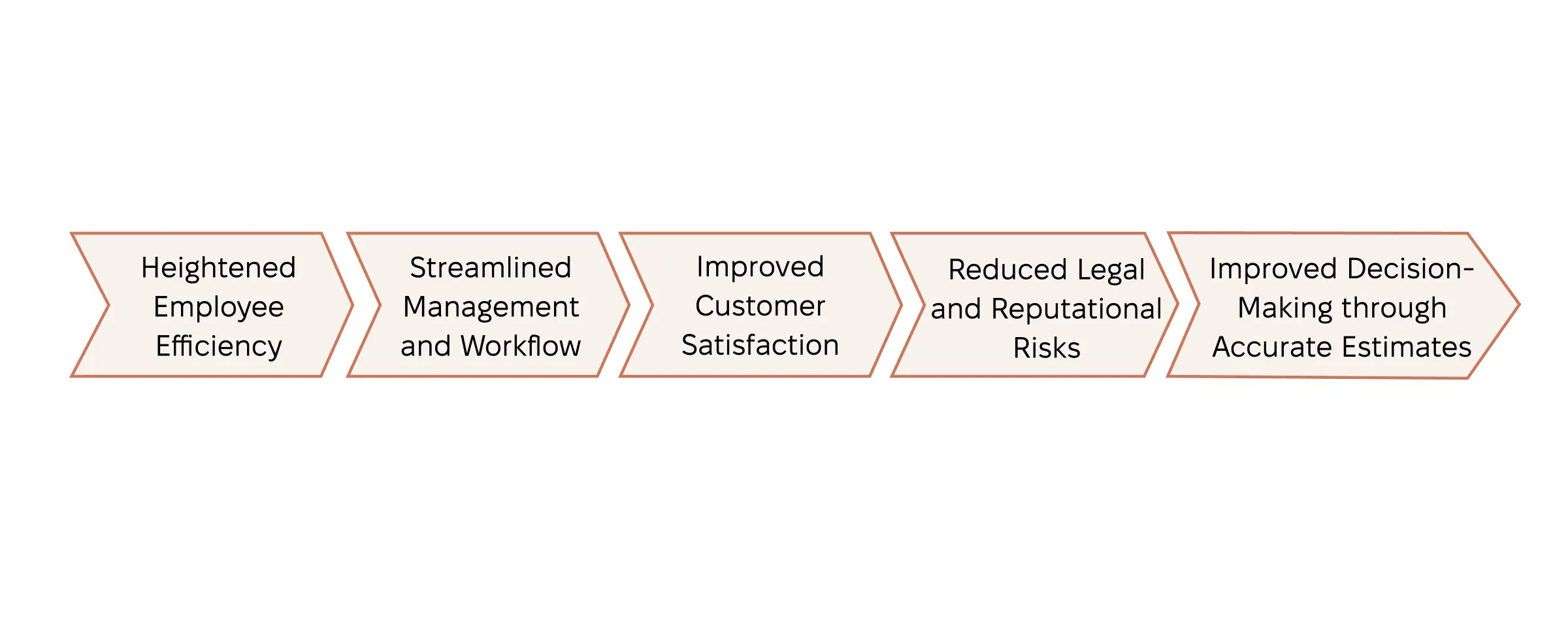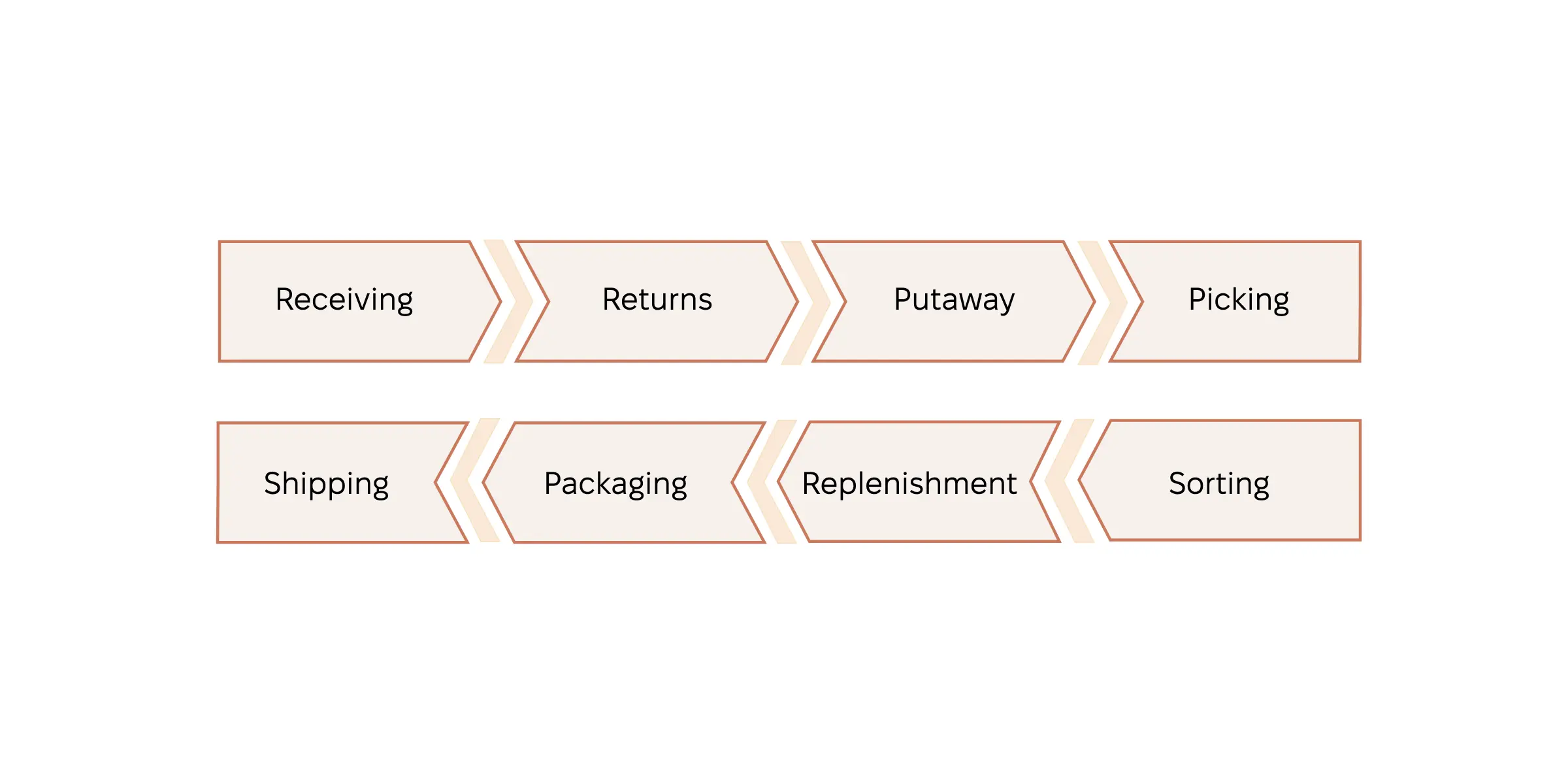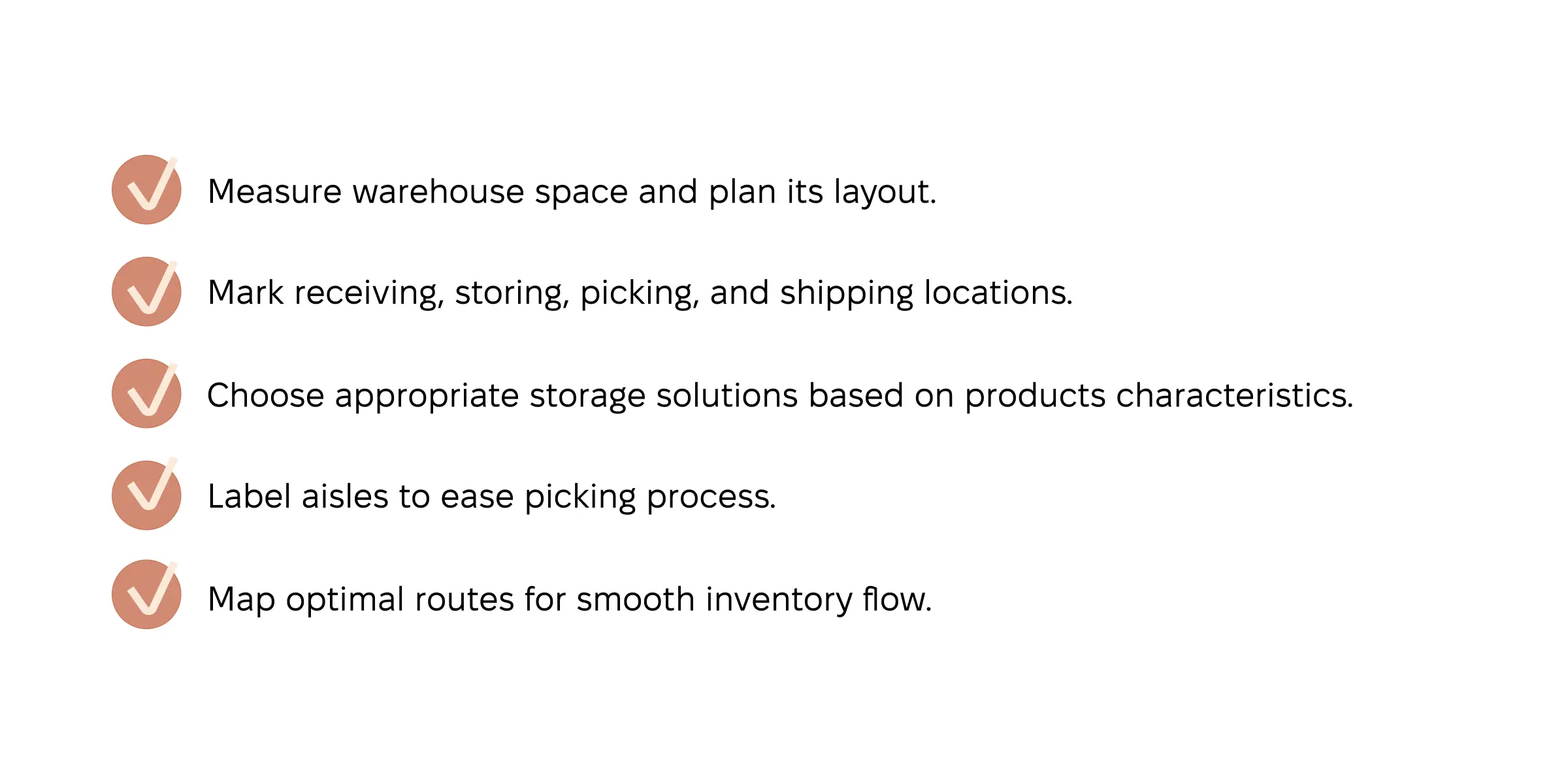Warehouse optimization helps minimize supply chain disruptions, resulting in higher customer satisfaction, accurate demand estimates, and quick order management. You can use a few optimization strategies to get there: audit your existing setup, diversify shipment options, establish safety protocols, and simplify receiving, picking, and packaging. Our post describes all these steps and includes a bonus checklist at the end.
56% of American buyers
abandon their carts for shipping-related reasons. Half of them aren’t willing to wait “5 to 8 business days” for their purchases to arrive. Warehouse optimization tips can help reduce order processing time and the number of abandoned carts, as well as increase sales. Yet, only
one in five warehouses
implements automation and other warehouse optimization consulting recommendations in 2024. The rest are missing out on this chance to lower operational expenses and boost sales.
In this post, we rely on our expertise in
WMS development
WMS development to draw a warehouse efficiency roadmap, an invaluable tool for mitigating risks and improving the bottom line. We’ll analyze other benefits of warehouse optimization. You’ll also get actionable tips for improved safety, storage, shipping, and data processing operations.
5 Benefits of Warehouse Optimization
Warehouse optimization combines motivated employees, effective processes, and advanced technology. Combined, they deliver multiple company benefit, includinge increased employee productivity, customer satisfaction, and reduced risks.
Heightened Employee Efficiency
Warehouse employee efficiency covers speed, accuracy, and idle time. Optimizing intake, storage, packaging, and shipping can reduce the cost of labor, which comprises up to 65% of total expenses. The cost of labor
increased by 10% to 15%
in the last five years. So, boosting efficiency is paramount for keeping the overhead manageable.
Streamlined Management and Workflow
Order picking, packing, sorting, and dispatching comprise
over 50% of overall warehouse costs.
Reducing human error is among the core benefits of warehouse efficiency, as it lowers expenses and keeps customers happy. Besides, warehouse optimization makes for a good picture for business partners and stakeholders.
Improved Customer Satisfaction
42% of American buyers consider the
delivery speed and cost
when choosing an online vendor. Additionally, 20% value-free returns and fast processing are available. Shipping carriers affect the speed of delivery. But faster warehouse order processing also improves customer experience and promotes brand loyalty. It’s especially relevant in 2024, as Gen Z is becoming the modern sales driver.
Reduced Legal and Reputational Risks
The number of
warehouse employee fatalities
increased from 24 to 50 between 2019 and 2022. Moreover, the injury and illness rate reached 5.5 per 100 full-time employees. Such safety issues have already caused Amazon to agree to pay
$4 million
to a warehouse employee injured due to falsified safety logs. Warehouse optimization strategies help create safe, standardized workspaces to prevent injuries and fatalities. In turn, this protects business owners from lawsuits and reputational hits.
Improved Decision-Making through Accurate Estimates
Leverage advanced technologies.
Warehouse management systems
(WMS), enterprise asset management (EAM), and machine learning algorithms unlock product shelf life
insights. Understanding how the items move throughout their lifecycle helps plan inventory. It also accounts for seasonal demand and improves sales.
7 Warehouse Optimization Tips
There are hundreds of small ways you can improve warehouse performance. However, their impact may be negligible in the grand scheme of things. So, instead, let’s focus on seven optimization strategies guaranteed to boost your business.
Organize and Audit the Warehouse
Before implementing any of the following tips for optimizing warehouse operations, you need to be aware of the warehouse's starting conditions. To that end, organize and account for all the items present in the warehouse at the beginning of optimization efforts. This will help you get a better idea of the current inventory, available space, etc.
Optimize Storage
Identify the measurements and use cases for all warehouse areas to ensure smooth workflow and promote workplace safety. Unifying storage units will help with handling and picking. At the same time, informed choices for flooring materials and equipment will ensure operational longevity.
Suppose there’s an existing infrastructure in place. Analyze the layout, storage solutions, etc. Develop warehouse optimization strategies for replacing inefficient or dated items to boost productivity.
Streamline Receiving Process
Receiving is the first stage of product handling. So, mistakes at this point have long-term repercussions for later picking, packing, and shipping. The receiving process should be well-documented, and employees should be trained. Receiving automation software and hardware can reduce mistakes, but they require an upfront investment.
Optimize Picking and Packing Process
Picking automation through software solutions can help map the shortest travel routes for pickers. It will also help you keep track of trendy items and adjust warehouse inventory. Based on order frequency, you can implement smart storage solutions. Moreover, you can track pickers’ effectiveness by putting in place incentives and keeping up morale. Tracking mistakes to fine common offenders is also possible.
Packing automation may include calculating the appropriate shipping container size according to SKUs. You can also create shipping labels and estimate package weight to calculate the delivery cost.
Diversify Shipping Solutions
Buyers increasingly value fast shipping. So, diversifying carriers can be a critical failsafe to preserve sales. Having at least one backup carrier option is especially important during the holiday sale season. It will protect your business if shipping operators become overwhelmed by the number of packages.
Analyze shipping cost, speed, and quality. Once you have enough data, it’ll guide your decisions about continued cooperation with certain carriers. For instance, a large percentage of reports about items damaged in shipping should encourage you to shift to another carrier.
Optimize Warehouse Data Collection and Processing
Data analytics is the most powerful tool in the warehouse manager’s arsenal. Instead of manual data input (susceptible to human error), opt for automated data collection and processing. Even simple barcode scanners coupled with advanced software can keep track of SKU receiving, storage, picking, packing, and shipping.
Generating custom reports for data-based decision-making is the most complex step in implementing these warehouse efficiency tips. Multiple metrics, from item order frequency to picking mistakes, must be considered.
Establish Safety Protocols
Implement OSHA (Occupational Safety and Health Administration) recommendations for warehouse safety and set up a self-perpetuating safety system. Analyze the most common hazards and injury sources and implement countermeasures. For instance, if slipping is a challenge, employ clear hazard communication and use anti-slip mats for high-traffic areas.
Warehouse Optimization Checklist
Keeping track of all possible optimization solutions is unrealistic. It’s even more so if you start the process from the ground up. To help keep track of the best practices, use this warehouse optimization checklist:
- Implement safety protocols and measures
- Organize the current warehouse stock
- Audit the stock and free space available
- Assign and label receiving, packing, and shipping areas
- Adjust storage to fit the product demand
- Choose two or three standard shipping packages
- Automate shipping label creation
- Collect and process SKU movement data
- Train employees to use the warehouse management system
Checking individual items off this checklist for warehouse efficiency can improve efficiency and boost profit. But implementing all steps in order will have the biggest positive impact.
Exoft as Your WMS Development Partner
Warehouse management systems by Exoft reduce the cost of storage, picking, and sorting by 10% to 30%. Meanwhile, inventory accuracy increases by 50% thanks to RFID inventory control systems. Moreover, our customers are 1.67 times more likely to see a 50% profitability growth. It’s a result of ensuring order processing within 30 minutes.
Exoft will empower you to reap the benefits of warehouse optimization. We provide a full range of
warehouse management system development
services, including:
- Custom WMS development for desktop and mobile devices
- Third-party integration and synchronization
- Customized solutions for ready-made WMS software
- Upgrades to legacy WMS solutions
- Continuous WMS support and maintenance
Exoft expertise covers inventory tracking solutions, supply chain management systems, shipping management software, as well as data management and custom reporting tools.
Capitalize on Warehouse Optimization Consulting with Exoft
Warehousing optimization grows ever-relevant as online sales overtake brick-and-mortar vendors. Warehouse optimization can improve employee efficiency, increase customer satisfaction to drive sales and brand loyalty, and mitigate business risks.
Warehouse optimization tips can look like easy fixes. Labeling aisles and shelving units can be enough. You may also want to install robotic receiving and picking solutions. Exoft is here to help analyze your needs and suggest the best solution for your budget and requirements.
Contact us
for an expert consultation on custom warehouse optimization.
Frequently asked questions
How can warehouse optimization directly impact my sales?
Implementing warehouse optimization techniques leads to shorter order processing and shipping times. Once buyers recognize you can meet their delivery needs, your sales will increase, and the number of abandoned carts will drop.
What technologies should I invest in to boost warehouse efficiency?
Barcode scanning and RFID inventory tracking are effective ways to optimize warehouse management. Machine learning algorithms are also efficient. They can analyze picking mistakes, capacity load, sales numbers, and other metrics. Full robotization can also boost efficiency, but it requires significant capital investment.
How do I estimate warehouse optimization ROI?
You’ll see tangible reductions in labor costs. Inefficient space use and inventory management mistakes will decrease. Increased sales due to improved customer satisfaction will also add to potential ROI, as will reduced risks of legal action by employees.
How soon will I see the first impact of warehouse optimization?
Depending on which warehouse efficiency tips you implement, you can see improvements within the first few days. For instance, improved visibility will instantly stretch the interval between employee injuries. However, it can take a few weeks or months to see a significant rise in profit.




